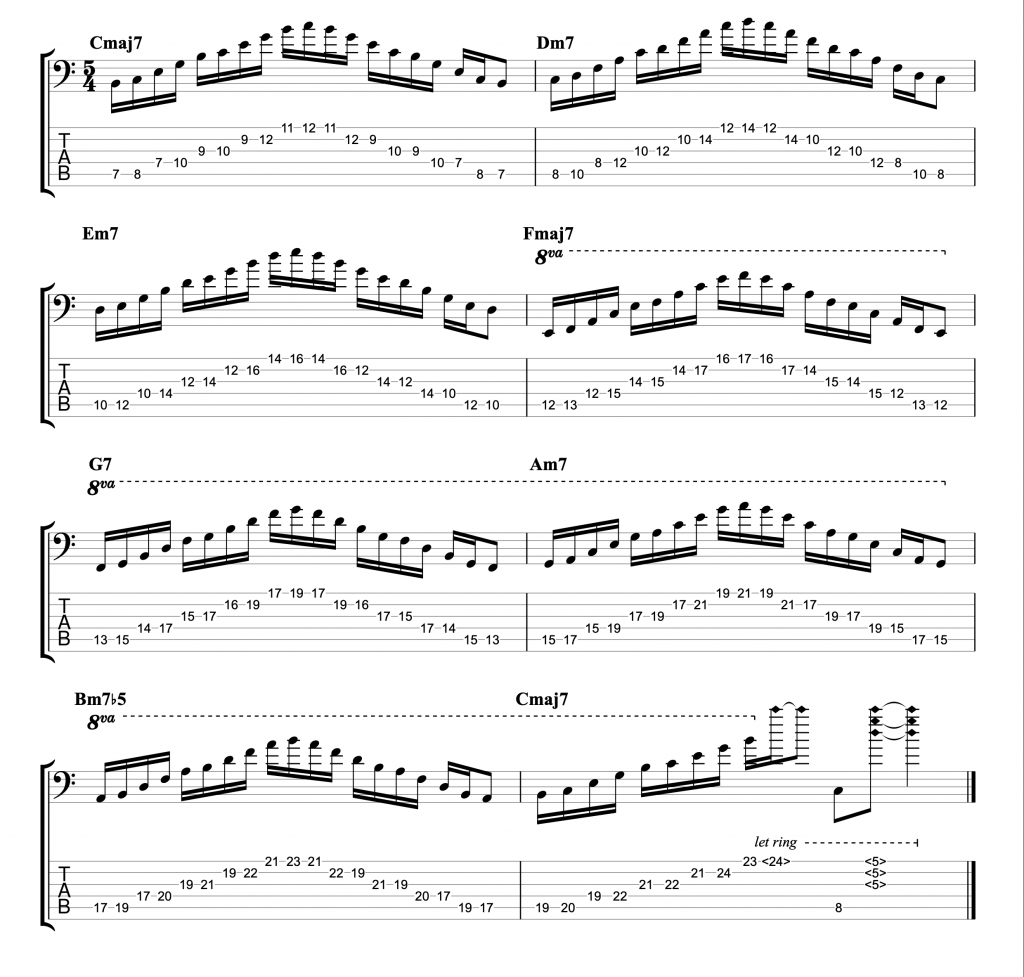Cascading Arpeggios Exercises for Bass Guitar – Bass Practice Diary – 9th February 2021
You probably have an idea in your head of what cascading arpeggios sound like, even though it isn’t a particularly technical musical term. I think that music journalists and writers often use the term more than musicians do. It gets used as a descriptive term in any number of different musical contexts. From classical music to guitar solos.
What are cascading arpeggios?
Usually they are either fast or repetitive descending arpeggios. It’s a very popular melodic device. And they also get used as a way of playing chords under a melody. In theory you could apply this idea to any arpeggio. In this video I’ve only used diatonic 7th chord arpeggios as an example. So, here are the four different inversions of a descending C major 7th arpeggio.

You can create an exercise by taking each of these inversions down through all of the diatonic arpeggios in the key of C major. I’ve done the first one of these in the video.

An alternative way of playing this is to move each arpeggio down the neck of the bass. Position shifting every time you start a new arpeggio. This is harder for the left hand.

I would strongly recommend practicing these both ways. Exercise 1 is easier to play, and it’s ok to play in one position like that. However, it also helps if you can shift positions smoothly. If you can’t, you’ll get stuck playing everything in just one place on the neck.
The final example that I featured in the video starts on an E7 chord and it uses the diatonic arpeggios in the key of A major. The inversion starts on the 5th, B in the case of the E7 chord.




